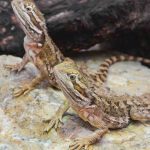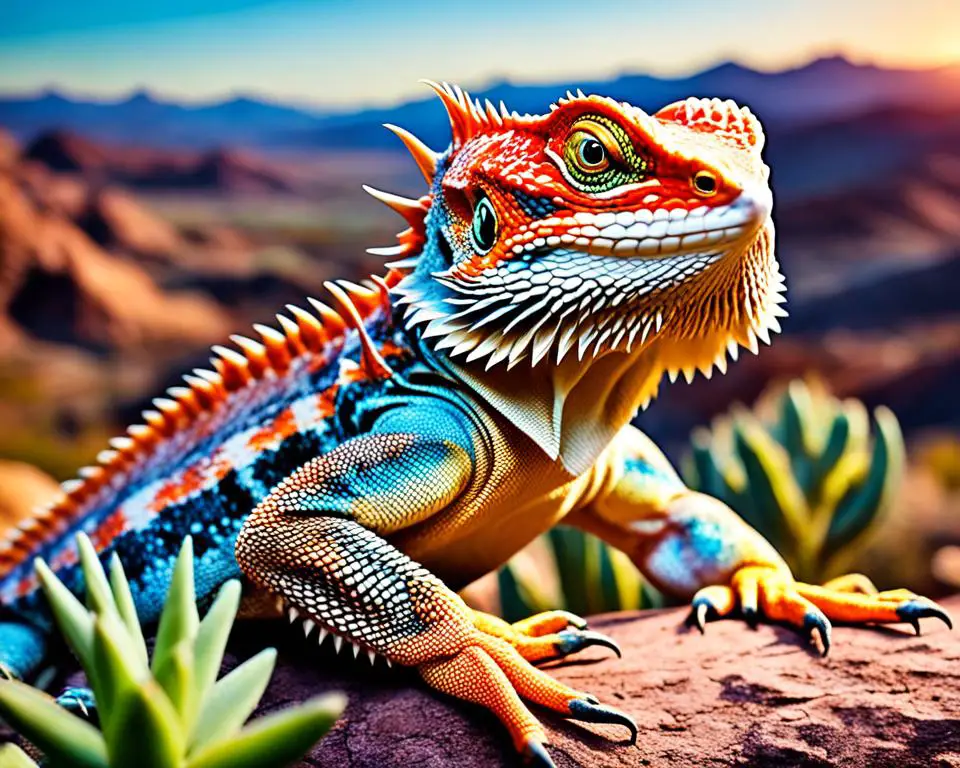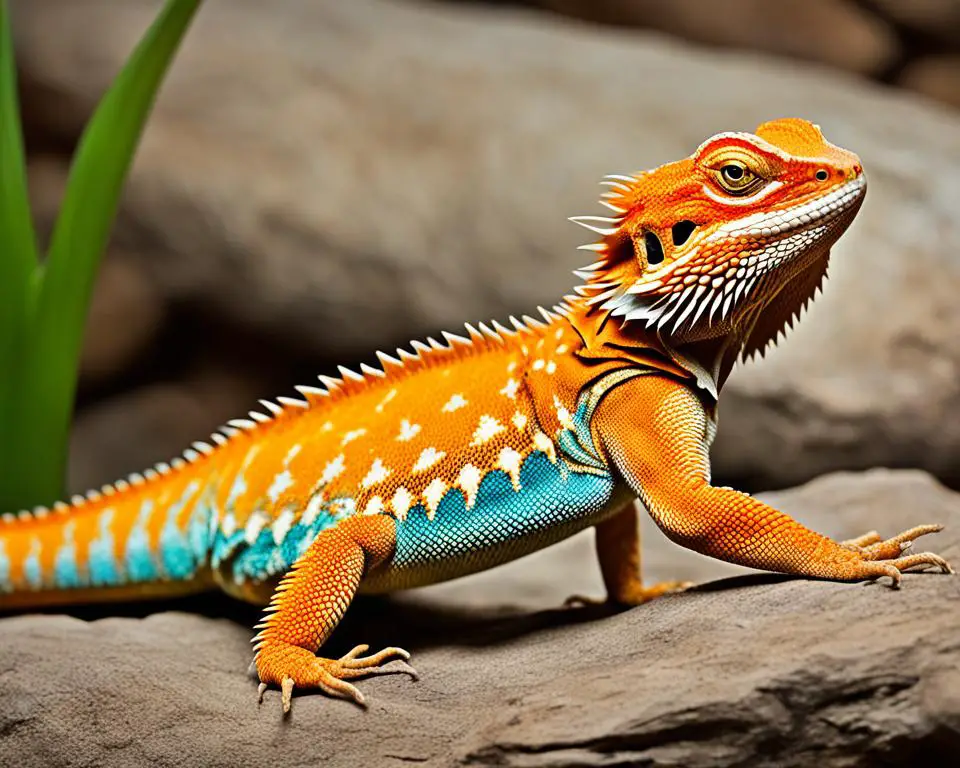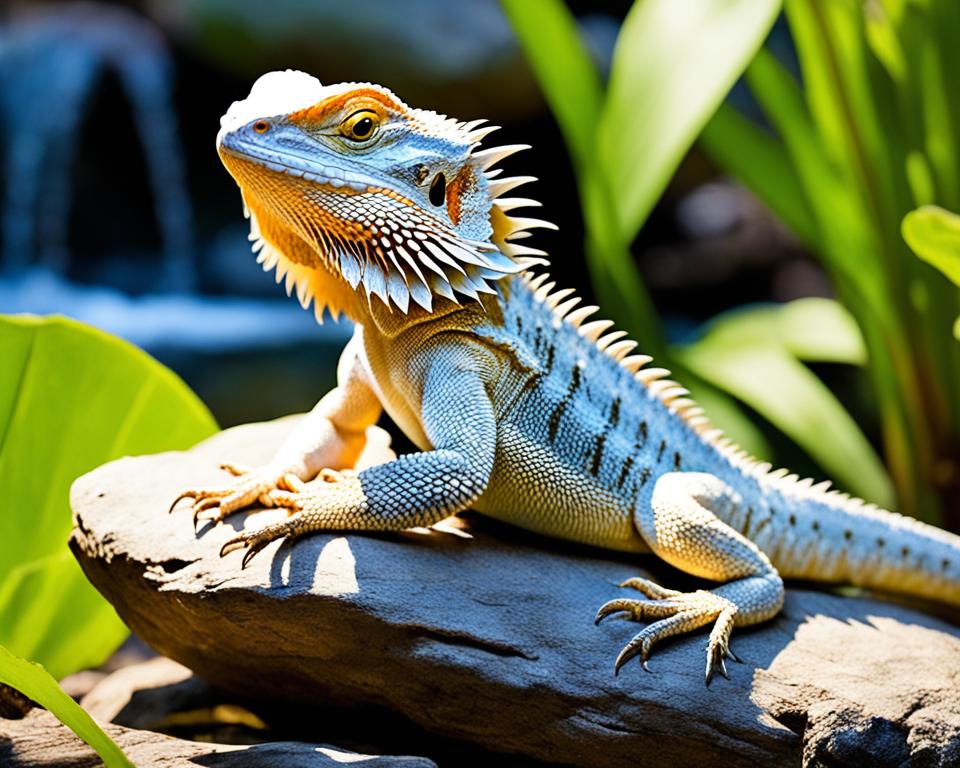If you’re a dog owner, then you probably already understand how much trouble these pests can cause. Flea infestations are very common among pets, especially common domestic pets such as cats and dogs.
But what about bearded dragons? Can bearded dragons get fleas?
Bearded dragons can get fleas. Just like cats and dogs, bearded dragons are prone to flea infestations if they are exposed to the wrong environment. Fleas can be brought in from other pets, wild animals, and even your own clothing or furniture.
To get rid of fleas on your bearded dragon, you’ll need to use a flea treatment product specifically designed for reptiles. You should also keep the area around your pet clean and vacuum regularly to help reduce the chances of flea infestation.
But don’t worry. In this article, we’ll go over some tips that will help you get rid of fleas without harming your pet.
Let’s get started.
What are fleas?
Fleas are tiny parasites that feed on the blood of their hosts. They have hard, flat bodies and can jump long distances to find new hosts. They are usually found on the skin of mammals and birds but also on reptiles.
The female flea lays her eggs inside the host animal’s body. After hatching, the larvae (baby fleas) feed on blood until they mature into adults.
The adult flea is known to bite humans and animals. It sucks blood from its hosts by inserting its mouthparts through the skin.
How do I know if my bearded dragon has fleas?
Signs that your bearded dragon has fleas can include excessive scratching, irritability and restlessness, changes in eating and drinking habits, and bald patches of skin.
Unfortunately, because they are small, the only real way to tell if your pet is suffering from fleas is to look carefully at its skin with a magnifying glass.
You should also look out for black specks on furniture or walls around the bearded dragon’s habitat, as this may be a sign of fecal matter from the fleas.
If you suspect that your pet has been infected, then it’s best to take them to a vet for further examination, which will involve treating them with appropriate medicine.
Where do fleas come from?
Fleas are one of the most common external parasites found in mammals such as cats and dogs. Although they can be hard to detect, these tiny creatures can cause a variety of health problems for their hosts.
So, it is important to know where fleas come from so that we can better protect our pets.
Fleas most often thrive when in contacts with other animals like wild rodents, raccoons, or opossums.
This means that any areas frequented by these animals are likely to be crawling with fleas. In addition, flea eggs, larvae, or pupae may also develop in carpets and bedding material inside our homes.
Why do fleas target bearded dragons?
Fleas tend to target bearded dragons mainly due to their habit of moving slowly when they are resting or sleeping. When a flea notices a sleeping bearded dragon, its natural instinct is to jump onto its skin and latch on as they make an easy meal.
Fleas thrive in warmer climates, so it is no surprise that they take advantage of the temperatures that a bearded dragon tends to regulate.
Bearded dragons naturally shed their skin much slower than other reptiles, making them an even more inviting host for fleas.
It is important to ensure that your pet dragon always has the correct nutrition, environment, and veterinary care in order to keep fleas away and preserve its health.
Can bearded dragons eat fleas?
Many pet owners wonder if they should provide their beloved bearded dragons with fleas as part of their diet. The answer is no! While fleas may be high in protein, they are considered unsafe for bearded dragons, as they can transmit parasites or other infections.
Furthermore, fleas are not appropriate substitutes for the live insects that make up a large portion of the bearded dragon’s diet.
If your pet needs additional nutrition, there are several types of fortified foods available to supplement their daily feedings. Most veterinarians will be able to help you find the best food source for your pet.
In general, providing your bearded dragon with a variety of live food sources and occasionally supplementing it with fortified diets is recommended in order to ensure the healthiest diet possible.
In a recent article I explain which bugs are safe for bearded dragons to consume.
Click the link above to read the article.
How to find fleas in Bearded Dragon’s cage?
Fleas can be a persistent problem for pet owners, especially those with Reptiles like Bearded Dragons. While fleas are a nuisance, it’s important to identify them in order to ensure the continued health of your pet.
Doing regular inspections is the best way to find these small critters; start by looking around the cage, as well as at your dragon itself. If you’re struggling to find any, pay attention to anything unusual, increased scratching, or irritated skin.
Noticing any of these physical signs may indicate an infestation, so it’s important to look further and take necessary precautions if needed. Checking regularly and taking action quickly can help keep your bearded dragon living happily and comfortably in their home!
How can I get rid of fleas?
Once you have identified the presence of fleas in your bearded dragon’s cage, it is important to take action as soon as possible.
1. Clean the tank
Start by removing all the items from your dragon’s tank and then vacuum to remove any existing fleas or eggs. Keeping your bearded dragon’s environment clean and dust-free is the key to getting rid of fleas.
Vacuuming frequently, washing bedding, and scrubbing hard surfaces with a pet-safe cleaning product is essential for preventing a flea infestation.
Tip: Sand is not a suitable substrate for beardies, as are all other particulate substrates. Switch to a safe substrate like tile, paper towels, or reptile carpet.
2. Use a flea spray
If you notice your bearded dragon has fleas, you can use a special parasitic spray made specifically for reptiles to get rid of them. Many flea sprays are available on the market that can be used to help get rid of fleas.
CLICK HERE to see the current price on Chewy.
3. Clean any carpet
We all know, right? Carpets are a haven for fleas. Even if you don’t have any carpets in your dragon’s tank, vacuum the room where the cage is located to prevent the fleas from spreading to other parts of the home.
4. Give your dragon a bath
Giving your Bearded Dragon a bath will be an add-on to help kill off any fleas that may be living on its skin. In fact, there are a lot of benefits to giving your bearded dragon a bath, such as:
- Cleanliness: A bath will help keep your dragon clean and free of parasites, mites, and other unwanted visitors.
- Relaxation: Bathing can be a calming and therapeutic experience for your dragon.
- Healthy Skin: Bathing can also help keep your beardie’s skin healthy by removing dirt, dust, and other irritants.
You can use a shallow container filled with warm water to bathe your dragon. Make sure the water isn’t too hot or cold, and give your dragon plenty of time to relax during the bath.
5. Consistent vet checkups
Taking preventative measures towards pest control will save you time and keep your beloved reptile safe.
In fact, regular veterinary checkups are essential to ensure the good health of your bearded pet dragon. Without ongoing medical attention, it can be difficult to catch potential issues early on.
Depending on the age and specific health needs of your dragon, many experts would suggest visiting the vet periodically during the year.
Can fleas bite bearded dragons?
Fleas can absolutely bite bearded dragons! In fact, flea infestations are one of the most commonly encountered health concerns among these beloved reptiles.
That said, they cannot use reptiles to reproduce, so the infestation tends to be short-lived and localized. However, if left unchecked, flea infestations can cause serious health problems for your dragon.
Summary
Before we move on to the conclusion, we’ve summarized this article into a short list of key points for you to remember:
- Fleas can be found on bearded dragons.
- You should regularly monitor your bearded dragon for signs of fleas.
- If you find fleas on your bearded dragon, you can use a flea spray to eliminate them.
- It is important to maintain a clean environment for your bearded dragon.
- Regular veterinarian visits are recommended for bearded dragons.
Conclusion
Fleas can be a nuisance to both humans and animals alike. Bearded dragons are no exception!
It is important to monitor your dragon for signs of fleas and take action if necessary. With proper preventative care, you can keep your dragon safe and healthy environment.
Want to learn more about bearded dragons?
Ready to boost your knowledge about your furry friend? If so, check out our other articles below:
- 7 Best Bearded Dragon Species to Have as Pets ([year])
- Coconut Oil on Bearded Dragons: Why, When, and How to Use It ([year])
- How Many Crickets Should a Bearded Baby Dragon Eat? (Explained)
Sources
- Bearded Dragons – Owning
- YOUR BEARDED DRAGON BATH GUIDE: HOW TO BATHE A BEARDED DRAGON IN 7 EASY STEPS, PLUS BATH TIPS AND MORE





